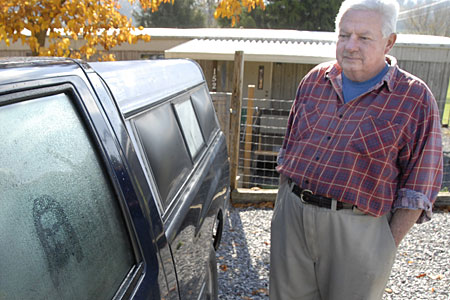
Understanding Pareidolia
Every morning, Jim Stevens of Jonesborough, Tennessee, went out to his Isuzu pick-up truck and saw what appeared to be the face of Jesus in the condensation on the driver's side window.

When Jim first saw the image in late 2009, he expected it to evaporate and that would be the end of it. But the next day, there it was again, and it reappeared every day for the next two weeks.
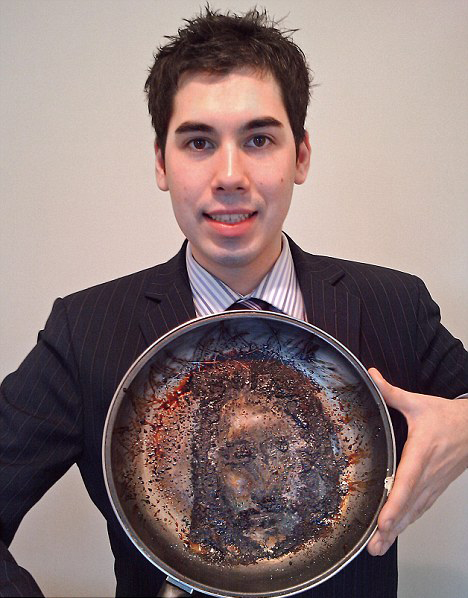
Toby Elles, an employee of the Halifax Bank in Lancaster, England, didn't expect to fall asleep while he was making himself a late-night snack of pan-fried bacon. About an hour later, he woke abruptly to find the room filled with smoke. When he scraped the remains of the bacon off the charred frying pan, Toby was surprised to see the face of Jesus staring back at him.
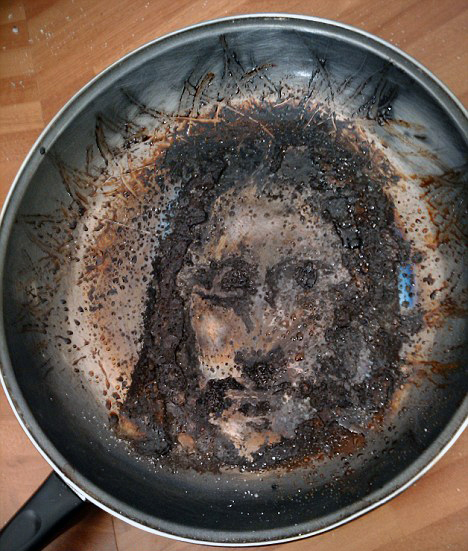
Donna Lee discovered the face of Jesus while cooking pierogies on Palm Sunday in 2005. "The last one I flipped over was Jesus," she says. "I flipped the spatula, and my husband goes, what the heck? There's Jesus!"
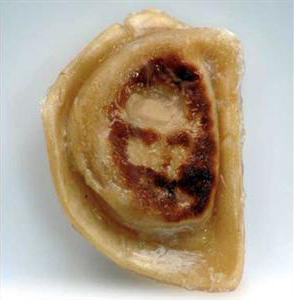
The symmetry in this face magically appearing on a slice of toasted bread is particularly striking.
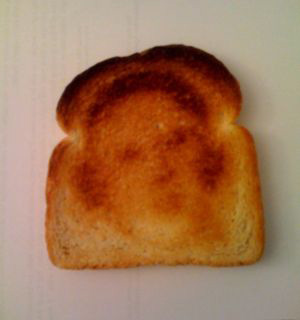
This cinnamon bun bearing the image of Mother Teresa was first discovered at the Bongo Java Cafe in Belmont, Tennessee. The cafe had the bun on display for about ten years until Christmas day in 2007 when the bun was stolen. Bob Bernstein, the owner of cafe, offered a $5,000 reward for its recovery. It eventually turned up in a thrift shop.
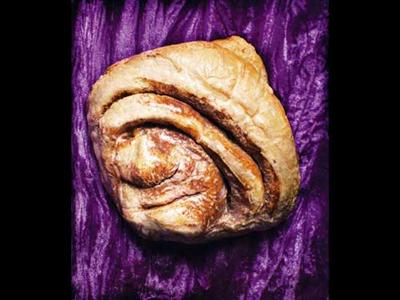
In 1994, Diane Duyser was starting to eat a grilled cheese sandwich when she saw the face of the Virgin Mary staring back at her on the toasted bread. She wrapped the sandwich in a plastic bag and left it in her freezer for the next nine years. Diane claims the sandwich never went moldy since first making it almost a decade earlier. In 2003, she put the sandwich up for auction on eBay. The cheese sandwich was purchased by the Golden Palace Casino for $28,000. They said they would use it to raise money for charity.
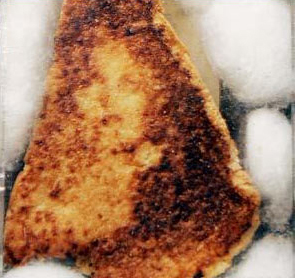
Mrs. Duyser claimed that the cheese sandwich had brought her good luck, including winnings of $70,000 at a casino near her home in Florida. After the auction, Diane Duyser had the image tattooed onto one of her breasts.
What are we seeing?
I believe these images are not hoaxes. They are not man-made, or at least not consciously or intentionally so. A close-up look at the "face" on the grilled cheese reveals it to be far less perfect than it may appear at first sight. The nostrils are missing, yet the brain perceives a face, so it fills them in. The mouth is unnatural and crooked, but we subconsciously make allowances or corrections. There are pronounced extraneous blotches near the right eye, yet the brain filters that out, or perhaps reinterprets it as a curl of hair.
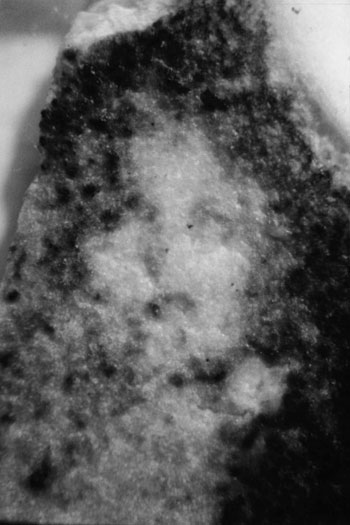
In reality, the facial features are formed by random blotches. The randomness in the blotchy array is perhaps better appreciated by turning the picture sideways or upside-down. With this new orientation, the brain is less likely to "see" a face, and therefore less likely to fill in the gaps to make this simulacrum more identifiable.
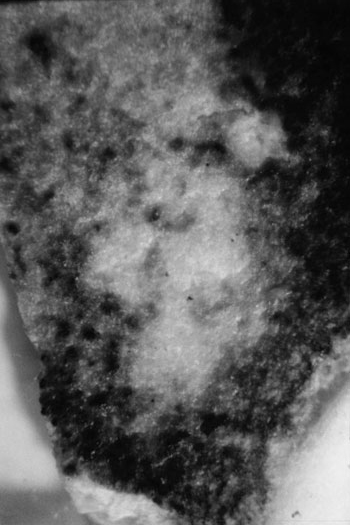
The thing I find incongruous is not the apparent representation of a "face", but rather the identity. It looks more like a Hollywood movie star than the sort of classic imagery normally associated with the Virgin Mary.
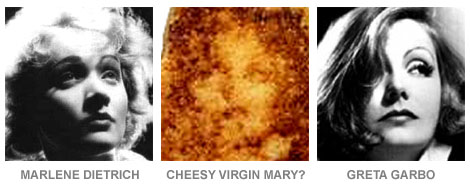
Nonetheless, it is a reasonable simulacrum of a person's face. Our brain makes it so.
Cognitive expertise
Indeed, seeing faces in inanimate objects is a common human experience. This phenomenon is not surprising in light of how much processing the brain does in order to recognize the faces of hundreds of different individuals throughout a life time of interaction with other people.
In this respect, the brain is an extraordinary facial recognition, storage, and retrieval machine, a task that it is extremely good at it. A byproduct of this cognitive expertise in recognizing faces is that people see faces even where there is no face.
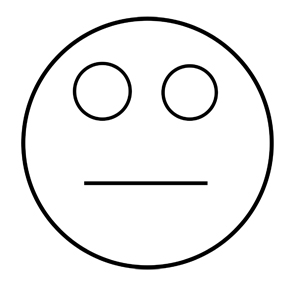
The simple figure above is made up of three circles and a line. However, most people automatically and subconsciously recognize it as a face. This is despite it having minimal and extremely abstract features of an actual face. This is a simple demonstration of the powerful mechanism the brain deploys for facial recognition.

The now familiar "smilies" on your computer screen are very simple line drawings where we not only identify faces but we also recognize a range of expressions on those faces.
Hard-wired
Carl Sagan hypothesized that as a survival technique, human beings are "hard-wired" from birth to identify the human face. This allows people to use only minimal detail to recognize faces from a distance or in situations of poor visibility. This hard-wiring can also lead humans to interpret random images or patterns of light and shade as being faces.
There is an evolutionary advantage of being able to identify the face of a friend from foe with split-second accuracy. A very young baby needs to be able to identify and attract the attention of the adults nearby because it is totally dependent on their care and support. The baby smiles when it recognizes a face to reward its caretakers. Facial recognition is a skill critical to survival.
While our brains may be predisposed to seeing faces appear as pareidolic imagery, this phenomenon is by no means limited to faces alone. On the contrary, any sort of image or shape known to us, including letters and numbers, can emerge.
Apophenia
The psychological phenomenon that allows us to see faces like this is called "pareidolic apophenia". The term apophenia was coined by Klaus Conrad in 1958. It refers to a human tendency to find meaningful patterns or to draw connections in random stimuli. Conrad originally described this phenomenon in relation to a distortion of reality associated with psychosis. However, the term has become more widely used to describe the human tendency to make sense of abstract images in a way that is now separate from mental illness.
Pareidolia is a type of apophenia where human observers identify images or sounds in random patterns and shapes. In other words, it is the imaginary perception of a pattern or meaning in something that is actually ambiguous or random.
Auditory examples include hearing hidden messages on vinyl records played in reverse, and hearing the phone ringing while taking a shower. The noise produced by the running water gives a random background from which the patterned sound of a ringing phone might be heard. After listening to a river cascading over boulders for an extended period, some people report hearing the river playing a Beatle's tune mixed in with the sound of the rushing water.
Mars
Another example of pareidolia is this apparent face that emerges from the shadows of a mountain on the planet Mars.
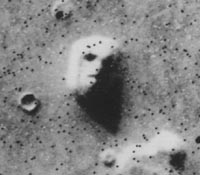
We can also find Bigfoot on mars!!!
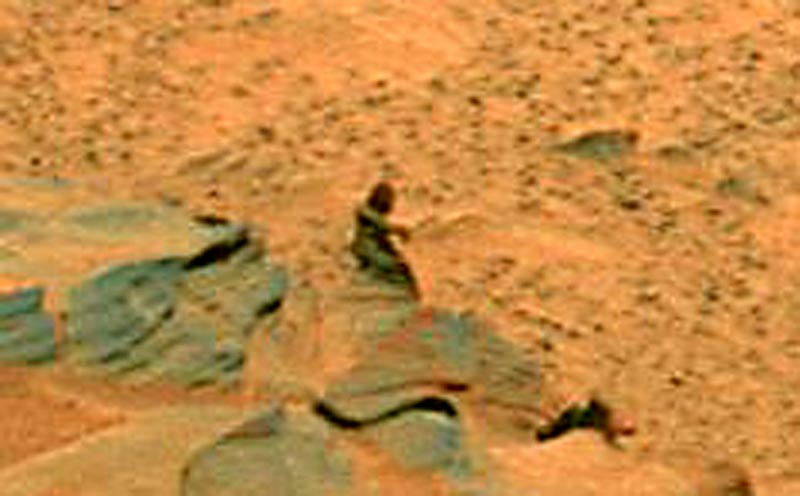
This image was among many sent back to Earth by the NASA mars explorer vehicle, Spirit. The "alien" is actually a blurry detail in a huge panoramic photograph snapped on the edge of Gusev crater in early November 2007.
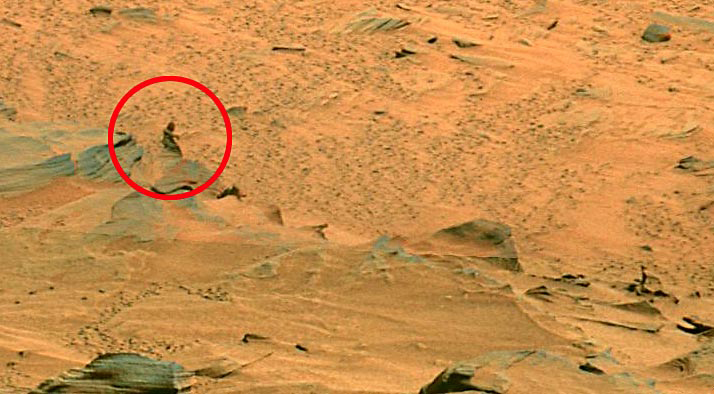
Clearly, these shapes are not man made, and underline the fact that these semblances, remarkable as they can sometimes appear, are indeed natural in origin. In other words, curiosities created by natural forces.
Little miracles
All the images being discussed above are examples of pareidolia. I find it interesting that many of these images are perceived as having religious significance; the assumption being their unexpected appearance is like a miracle and therefore must be a sign from heaven.
I acknowledge there is a feeling of something magical about images appearing in places they should not exist. There is often a feeling of mystery and awe when pareidoliac imagery is recognized. There is a definite "wow" factor.
What if somebody could harness the magic, mystery and power of paraeidolia? This has been done on several occasions. One example is the Rorschach "ink blot" test designed to help analysts get insights into a troubled person's psyche.
There is another fascinating application developed much earlier in history. I now turn my attention to exploring an extremely clever implementation of this psychological phenomenon.
Secret Code
Starting in the 16th Century, Spanish priests turned this optical illusion into a secret, coded language. It developed into a system used extensively all over the known world through the centuries that followed.
The coded sign language which is "written" on the landscape remains completely invisible to an untrained observer. The code is effectively hidden in plain sight.
The coding system was based on scholarly pursuits of the times such as Golden Mathematics that embraced the concept of phi. Ideas that were the pinnacle of knowledge in their day, and therefore inaccessible to all but an educated few. Religious imagery was also a prominent theme in Spanish symbolism so an in-depth knowledge of the scriptures was important as well. Without inside knowledge of the underlying ciphers, it is virtually impossible to break the code.
The Spanish used the English language as the basis for their secret code and not the Spanish language as one might expect. English was a relatively obscure language in the 16th century, so the use of English effectively added another level of concealment to their secret code. Of course, this is very convenient for modern-day sign readers in former Spanish colonies that are now English-speaking countries. We can be thankful they didn't decide to use Latin or Greek.
Not all of these signs are "treasure" related. Most served a purpose similar to modern roadside-signs today. They guided you to sources of water, to pasture for grazing animals, to camping places, or they warned you of dangers ahead. These types of signs are easier to see and interpret. They use minimal or straight-forward coding. Mining-related signs are more highly concealed, especially those revealing the location of hidden vaults. They take great skill to recognize and sophisticated knowledge to interpret.
The routes to mines and secret caches were serviced by Royal Roads. It was strictly forbidden to be on a Royal Road unless you were carrying out the King's business. An infringement could lead to severe punishment or death. The signs and symbols found on Royal roads are restricted to a special set of imagery that confirms it is a Royal Road. For example, the image of a lion represents royalty or the King.
By law, the "King's quint" or King's fifth (20%) share had to be transported exclusively along a Royal Road. These roads usually had a strategic advantage in case of marauders and attacks. On a Royal road, the signs and markers were made with great care as mistakes in navigation were not tolerated. Transporting gold and silver was a serious business.
The Spanish paraidoliac coding technique is the unique key to finding lost and hidden Spanish mines and caches, both then and now. The secret code is still there and decipherable to this day. These hidden signs and markers are found in abundance anywhere the Spanish trod. However, knowledge of how it works has been almost completely lost through the centuries, although some people are working towards reviving and understanding the underlying ideas and techniques.
![]()
Peter Gray
telephone: +1 (661) 242-1234